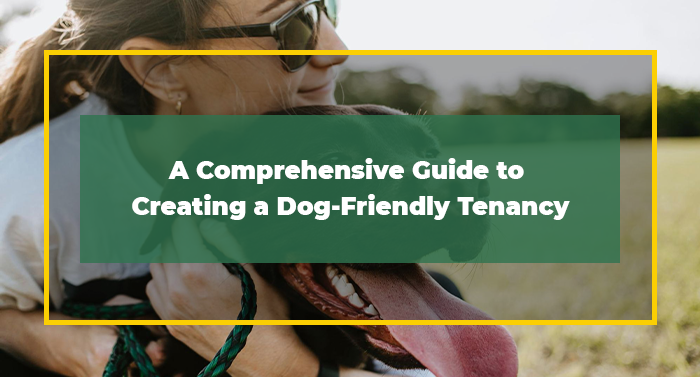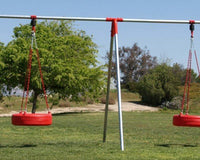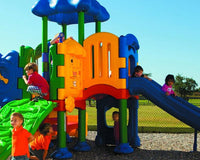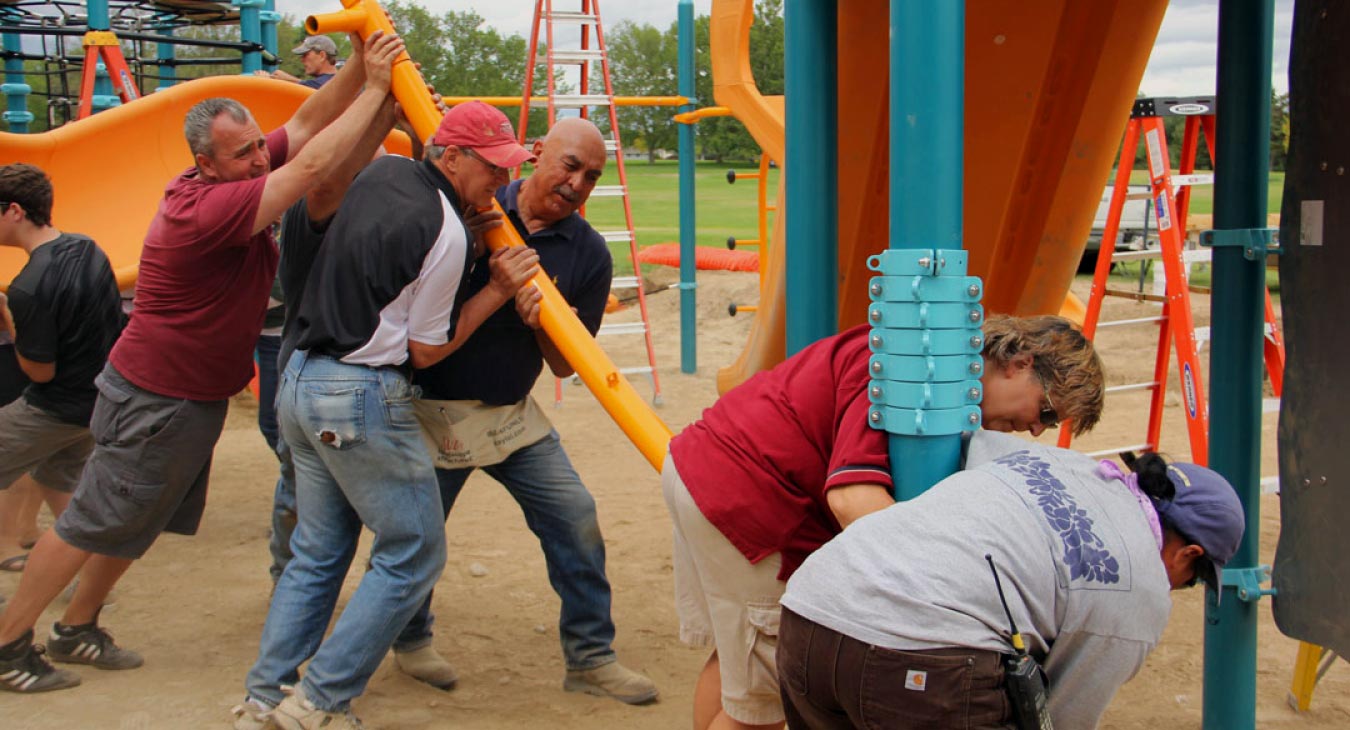People who rent or have rented at some point know the struggles of finding a new place for themselves and their beloved dogs. Not all apartments accept pets, and for some that do, more restrictions apply than usual.
Imagine their joy of finding housing that is accepting of their dogs or cats (or leaves open the prospect of getting one in the future). Some would be happy to move into a new community that is warm and welcoming to their family.
As a property owner, operator, or manager, you can meet the needs of pet parents looking and sometimes willing to pay more for a decent home. Building your property as a dog-friendly community is a good decision for your business, the renters, and their furry pals.
Explore the idea of creating a dog-friendly, accessible, and inclusive community. This guide navigates the important aspects that would make the decision beneficial for all the stakeholders. Learn the key considerations and precautions that would help you avoid complications and protect your property as you implement your pet policy.

What Are the Benefits of a Dog-Friendly Community?
Why does it make sense to make your property dog-friendly? Start with these statistics on the state of pet ownership in the US:
- 66% of households own a pet, according to the American Pet Products Association’s (APPA) 2023-2024 National Pet Owners Survey. In 1988, the percentage of pet-owning households was 56%.
- Dogs remain to be America’s favorite with 65.1 million households owning one.
- The same APPA survey found that 33% of the current pet owners are millennials.
- About 4.8 million pets were insured in the US, according to the 2023 State of the Industry (SOI) Report by the North American Pet Health Insurance Association (NAPHIA).
- Of the total insured pets, dogs accounted for 80.1%.
- The SOI report also showed that total premium volume in the US increased to $3.2 billion.
Benefits of a Dog-Friendly Community for Landlords
Here’s a closer look at how making properties pet-friendly can be beneficial in today’s rental market:
Low Advertising/Marketing Costs
Landlords with dog-inclusive apartments often experience lower advertising costs. The supply of pet-friendly rental housing is typically less than the demand, a factor that can naturally attract potential tenants without extensive marketing efforts.
Less Turnover
The Michelson Found Animals Foundation and the Human Animal Bond Research Institute’s (HABRI) 2021 Pet-Inclusive Housing Report made an important observation about pet-friendly housing. Residents in such housing tend to stay 21% longer, which translates to about 10 months more, than those in non-pet-friendly housing.
Faster and Easier Unit Filling
The same report also highlights that 83% of owners/operators found that pet-friendly units filled up faster, and 79% agreed they were easier to fill. This ease of filling vacancies can significantly benefit landlords in maintaining consistent rental income.
Higher Rent Potential
According to the State of the Young American Renter Survey by Grubb Properties, many renters prioritize finding a pet-friendly building, even if it means paying higher rent. This willingness presents an opportunity for landlords to charge a premium for accommodating pets.
Renters with pets typically pay more than non-pet-owning tenants to cover the potential costs of repairing or maintaining the property. They tend to pay pet rent or an amount charged on top of the monthly rent. Some landlords also have to pet-proof their rental (e.g., install soundproofing), which can increase the monthly rent.
Benefits of a Dog-Friendly Community for Tenants
People with dogs tend to be more physically active as they have to go on walks with their four-legged friends. Aside from regular physical activity, dog owners are found tolikely report a healthy diet and ideal blood sugar levels.
Dogs also offer comfort and companionship. They and other pets have demonstrated their unwavering and nonjudgmental emotional support to their humans during the COVID-19 pandemic.
The happiness that dogs bring also extends to other residents and thereby brings people together. In the 2021 Pet-Inclusive Housing Report, 73% of dog owners revealed that their pets brought them closer to their neighbors.
Benefits of a Dog-Friendly Community for Dogs
An inclusive rental means pet owners will not have to part with their canine companions. Some animals have to be surrendered to shelters or need to be taken by other family members as a last resort. The worst that could happen is animals being abandoned and contributing to the stray problem.
Like humans, dogs also need access to open spaces where they can exercise and explore, as well as basic services like veterinary care and grooming to improve the quality of their lives.

Balancing the Needs of Pet and Non-Pet Owners
Accommodating the needs of every tenant, pet-owning or not, makes your rental property inclusive and accessible. How do you create an environment that is conducive for all residents?
1. Promote a Safe and Peaceful Environment
Establish clear pet regulations to promote and enforce responsible pet ownership for the peace and safety of the community. Noise and fear of dogs (or being bitten by one) are common, valid concerns, and your pet policy would need to address those issues. Lease contracts must also clearly state the rights and responsibilities of pet owners. Moreover, be responsive and open to feedback from tenants.
2. Keep the Community Clean and Healthy
Pet owners not cleaning up after their dogs pose health risks to humans and pets in the community. Encourage owners to clean the mess their dogs make by putting dog waste bins in strategic areas on the property. It also comes down to strict enforcement of rules and fines to discourage repeat offenses. Look into anonymous reporting or using a DNA service that traces the poop to the dog-offender and their owner.
3. Establish Animal Management and Control Policy
Your building will also have to address animals on your property that may have been abandoned or don’t belong to the current residents. Set rules on residents touching strays, feeding them, or bringing them to their units to avoid rabies and other health risks associated with unfamiliar animals, damage to property, and potential conflicts with neighbors. Also, consider working with local animal shelters and organizations to help manage and remove stray animals humanely.

Establishing Clear Pet Policies for Tenants
Implementing a clear-cut pet policy protects your property and yourself from liability. This set of regulations also protects tenants and their beloved animals. Consider these guidelines in creating policies that are clear, comprehensive, effective, and fair.
Understanding and Managing Pet-Related Risks
Identify the risks associated with renting out to people with pets. These include the following:
- Pet waste
- Pet allergies and injuries
- Damage to property (e.g., scratched surfaces, chewed carpet, urine odor left)
- Excessive noise and behavior that could disturb or injure other residents
Factor in your tolerance to those risks and write the most viable solutions to worst-possible scenarios into your policies.
Checking Insurance and Breed Restrictions
Check your insurance policy. Your insurer may have specific dog breeds that they don’t want to provide coverage for. These breed restrictions admittedly affect your policy in accepting dogs in your rental units.
Regularly review and update your insurance policies to align with any changes in breed restrictions. Additionally, staying informed about potential liability issues related to specific breeds can help you make informed decisions about your pet policies.
Implementing Pet Fees and Deposits
Require pet fees or deposits as protection against property damage or cleanup costs after a tenant has left.
The pet fee is paid one time and upfront. It’s non-refundable and serves as an admission or acceptance fee. A pet deposit is another upfront amount paid once but is refundable. Any costs arising from damage to the unit will be taken from the pet deposit. Consult your local and state laws regarding pet rent and fees.
Aligning with Legal Requirements
Review local, state, and federal laws and regulations in creating your building’s pet policy to avoid lawsuits and infringing on other people’s rights. Take, for example, these two federal laws addressing renters who have animals not considered pets:
- The Fair Housing Act protects tenants from being discriminated against because of disability. Under the FHA, a person with a disability who uses an assistance animal can be given reasonable accommodation to allow them to keep the animal in a no pets policy dwelling.
- The Americans with Disabilities Act protects the rights of people with service animals. ADA defines a service animal as “a dog that is individually trained to do work or perform tasks for a person with a disability.”
Setting Clear Rules and Expectations
Clearly state what is allowed, what is expected of tenants, and on what grounds the stay of their pets in the unit can be revoked or terminated.
Specify allowed breeds, weight limits, number of dogs per unit, required documentation, and more. Identify tenant responsibilities when handling and managing their pets’ behavior, pet waste management, and property damage. Explicitly say that the tenant has responsibility over their pets which the tenant must agree to.
Conflict Resolution and Reporting Process
Create a process for reporting complaints and resolving conflicts, including pet-related issues. This should outline the steps for tenants to report incidents, from minor disturbances to more significant issues.
In the second phase of the process, detail how these complaints will be managed and resolved. This could involve mediation between parties, investigation by management, and appropriate actions taken based on the severity of the issue.
Documentation and Communication of Policies
Put everything in writing. Incorporate the policies into the written lease agreement or as a separate pet agreement attached to the lease contract.
For awareness and dissemination, post key pet regulations in common areas like elevator lobbies and hallways. Also, upload copies of your pet policy on your website or make available copies of the policies upon request.

Gathering Feedback and Improving Policies
Be prepared to review and change pet policies to address recurring concerns, reflect new laws and regulations, or update preferences. While conversations are helpful, encourage residents to write letters or emails for documentation.
Communicate to tenants significant changes to rules prior to implementation. You can set a period where people can provide comments and feedback. The building’s easing of breed restrictions, for example, would likely raise concerns from tenants who signed up to live there because of those restrictions in the first place. It can also be met with frustration from tenants who had to rehome their dogs because their breed was banned.
Ensure that any new policy does not violate any existing lease contracts. When in doubt, consult a landlord-tenant lawyer.

Essential Dog Amenities for a Community
For pet parents, having access to facilities that keep their dogs in tip-top condition is always a welcome treat. Consider including the following amenities in your community:
Dog Park
A dog park allows dogs to freely play and interact with other dogs unleashed. An ideal dog park is spacious for animals to explore and has play equipment to stimulate and encourage them to exercise. This dog park is often an enclosed area in a public park with a double-gate system to ensure that dogs and humans are safe in their spaces.
Washing Station
Dog wash stations are a premium for those living in apartments and can be an extra source of income for you. A well-placed self-serve wash station can serve residents and customers nearby, adding foot traffic to your property. Best of all, it helps keep dogs in your community well-groomed, healthy, and happy.
Pet Waste Disposal Station
Embracing pet inclusivity includes providing facilities to encourage pet owners to be responsible. Pet waste stations and signs leading to them would keep the property neat and waste-free. If you have an on-site dog park, setting up a waste station and washing station would be ideal.
Doggy Daycare
Parents who have returned to the office or attend school may find their pets better off attending a doggy daycare and spending time with their friends every now and then. This doggy daycare may also alleviate boredom and loneliness when no one is at home.
A dog’s original clinic may be too far from where they now live, so it’s a win for fur parents to find a nearby veterinary clinic that offers grooming services as well.

How to Ensure Safety in a Dog-Friendly Community
In 2022, insurers made payouts totaling more than $1 billion in claims arising from dog bites and dog-related injuries. It’s hard to tell whether a dog will be a problem. However, you can employ these strategies to help prevent problems relating to dog behavior in the future.
Pet Screening
Like their parents, pets can be screened by you or a professional to determine whether they are a right fit, verify their status as service dogs, and get a glimpse of their behavior and personality.
As part of pet screening, ask the owners to present their pet’s resume. This should containbasic information like age, breed, height, and weight and documentation like pet references from previous landlords or veterinarians, vaccination and treatments (vet records as legally permitted), and certifications of training.
Leashing Policy
Keeping one’s dog on a leash when outside the home and in public spaces is a matter of safety for the dog, other animals, people, property, and plants. This requirement to leash dogs outdoors is also reassuring to people who are afraid of dogs or have children with them.
You can enforce your state or local leash law and require residents to put their dogs on leash at all times the moment they step outside their apartment. The precaution is necessary even for well-behaved dogs at home asthey react to other dogs and strangers outside.
Ask Before You Pet Policy
Include this reminder in your pet policy to be posted in the building’s common areas. Asking permission from the owner or guardian of the dog is not only good etiquette. This also keeps the person out of harm’s way should the dog react aggressively to them.

Handling Noise and Nuisance Complaints
Dogs bark and sometimes excessively to the annoyance of neighbors. Others also wreak havoc on someone else’s property. Here’s how to deal with noise and nuisance complaints relating to the dog next door as a landlord.
- Acknowledgement. Let the complainant know that you have received the complaint and will act on it without delay. Doing so will also show that you take the matter (any complaints for that matter) seriously.
- Verification. Get to the bottom of the complaint. Talk to the people around, like the next-door neighbors and the dog’s owner. You may ask for further documentation from the claimant.
- Dispute resolution. Refer to the building’s rules to resolve the issue for the time being or permanently. You and the involved parties can also try to reach an agreement to resolve the matter. Without a resolution between the parties, the matter may be escalated to the local authority.

Implementing Breed Restrictions
While not applicable to service and emotional support animals, breed, size, and weight restrictions for apartment complexes and communities keep responsible owners out of affordable housing. This also doesn’t bode well for dogs that risk losing their homes or not being adopted.
According to the American Veterinary Medical Association (AVMA), the breed is one of several factors determining a dog’s propensity to be aggressive and is a poor sole predictor of aggressiveness.
It’s still up to you to admit certain dog breeds into your property subject to more stringent screening of prospective tenants and their pets or imposing higher fees in light of your insurance policy. You can also require renters to obtain renters insurance that covers property damage or injuries caused to others by dogs.
States, counties, and municipalities may also have breed-specific legislation. Home insurers vary on which dog breeds they ban. Take a look at 10 breeds that are on 42 insurers’ banned listsbased on Forbes Advisor’s analysis of their state insurance filings:
- Pitbull
- Doberman Pinscher
- Rottweiler
- Wolf Dogs and Wolf Hybrids
- Chow Chow
- Presa Canario (Canary Dog)
- Akita
- German Shepherd
- Husky
- Mastiff

Creative Approaches to Building a Dog-Friendly Community
You’ve laid down the rules. It’s time to make your dog-friendly community fun and engaging for residents. Try any of the following:
- Host community gatherings. Be it pet appreciation day or a themed celebration, community gatherings help new members feel included and welcomed. These gatherings also give other residents opportunities to get a bit closer to dogs.
- Educate. Partner with a local shelter in organizing interesting yet educational events about dogs. Goals can include how to groom dogs better, clear some stigma linked to dog breeds, and learn the basics of safely interacting with dogs for non-pet-owners.
- Organize events for dogs. National Dog Day or not, celebrate humans’ best friend and dedicate a day when they can play and run to their hearts’ content at the dog park. There should be games and treats for pet owners and their favorite furry pals.
- Post on social media. Get people talking about your events and property that welcomes dogs (or other pets). Consider promoting services and amenities that families with dogs would love to have on their apartment living list.

Conclusion
Millions of Americans consider dogs to be family, and living with them goes without saying. When you open your place as a pet-friendly rental, you are widening their options for a great place to live in and widening your customer base at the same time.
A dog-friendly community is built on mutual respect and recognition of everyone’s rights and responsibilities in keeping the community clean, safe, healthy, liveable, and fun.
It’s also built on rules that govern the conduct of every resident and ideally features amenities for the convenience of its residents. Some of those rules may be controversial, and you can allow exceptions as you deem fit.
Managing this community also means recognizing that problems can arise from humans and animals mingling. It’s best that you handle these issues to maintain harmony and peace.
It takes people, dogs, and lots of effort to build this community.
References
ADA requirements: Service animals. (2023, December 20).ADA.gov. https://www.ada.gov/resources/service-animals-2010-requirements/
Assistance animals. (n.d.). HUD.gov / U.S. Department of Housing And Urban Development (HUD). https://www.hud.gov/program_offices/fair_housing_equal_opp/assistance_animals
Dog bite risk and prevention: The role of breed. (n.d.). American Veterinary Medical Association. https://www.avma.org/resources-tools/literature-reviews/dog-bite-risk-and-prevention-role-breed
Gallagher, K. (2021, February 10).Pet fee for rentals: A pet rent and deposit guide | Zillow Rental Manager. Zillow. https://www.zillow.com/rental-manager/resources/pet-rent-and-pet-fees/
Grubb Properties (2022, November 1). Young American Renters Already Making Changes in Response to Inflation. [Press release]. https://www.prnewswire.com/news-releases/young-american-renters-already-making-changes-in-response-to-inflation-301663697.html
Horvath, S. (2023, December 29).Pet liability insurance for renters (2024). MarketWatch. https://www.marketwatch.com/guides/insurance-services/pet-liability-insurance-for-renters/
How animals help us during the COVID-19 pandemic. (2020, March 30). Tufts Now. https://now.tufts.edu/2020/03/30/how-animals-help-us-during-covid-19-pandemic
How can I safely walk my reactive dog?(n.d.). https://www.aaha.org/your-pet/pet-owner-education/ask-aaha/how-can-i-safely-walk-my-reactive-dog/
Leefeldt, E. (2023, October 3). Dog breeds banned by home insurance companies.Forbes Advisor. https://www.forbes.com/advisor/homeowners-insurance/banned-dog-breed-lists/
Pet-Inclusive Housing Initiative. (2022, November 22).2021 Pet-Inclusive Housing Report | Pet-Inclusive Housing Initiative. https://www.petsandhousing.org/2021-pet-inclusive-housing-report/
Pet industry market Size, Trends & Ownership Statistics. (n.d.). Default. https://www.americanpetproducts.org/news/News-Public-Relations/pet-industry-market-size-trends-ownership-statistics
San Francisco SPCA. (2023, May 9).Nuisance Behaviors (Dogs) - San Francisco SPCA. https://www.sfspca.org/resource/nuisance-behaviors/
Silva, M. M. (2023, June 4). Housing crisis forces renters with pets to make a tough decision.Times Union. https://www.timesunion.com/hudsonvalley/news/article/renters-with-pets-struggle-finding-housing-18099631.php
Table of State Dog Leash Laws | Animal Legal & Historical Center. (n.d.). https://animallaw.info/topic/table-state-dog-leash-laws
Team, K. (2023, May 3).North American pet insurance industry surpasses $3.5 billion -
NAPHIA. NAPHIA. https://naphia.org/news/soi-report-2023/
The Fair Housing Act. (2023, June 22). https://www.justice.gov/crt/fair-housing-act-1#disability
Triple-I: Dog-Related Injury claim payouts exceeded $1 billion in 2022 | III. (n.d.). https://www.iii.org/press-release/triple-i-dog-related-injury-claim-payouts-exceeded-1-billion-in-2022-040623
Weiss, C. (2021, March 7).Mayo Clinic Q and A: How owning pets can lead to a healthier lifestyle. Mayo Clinic News Network. https://newsnetwork.mayoclinic.org/discussion/mayo-clinic-q-and-a-how-owning-pets-can-lead-to-a-healthier-lifestyle/
What is cynophobia?(2021, May 5). WebMD. https://www.webmd.com/anxiety-panic/what-is-cynophobia




























